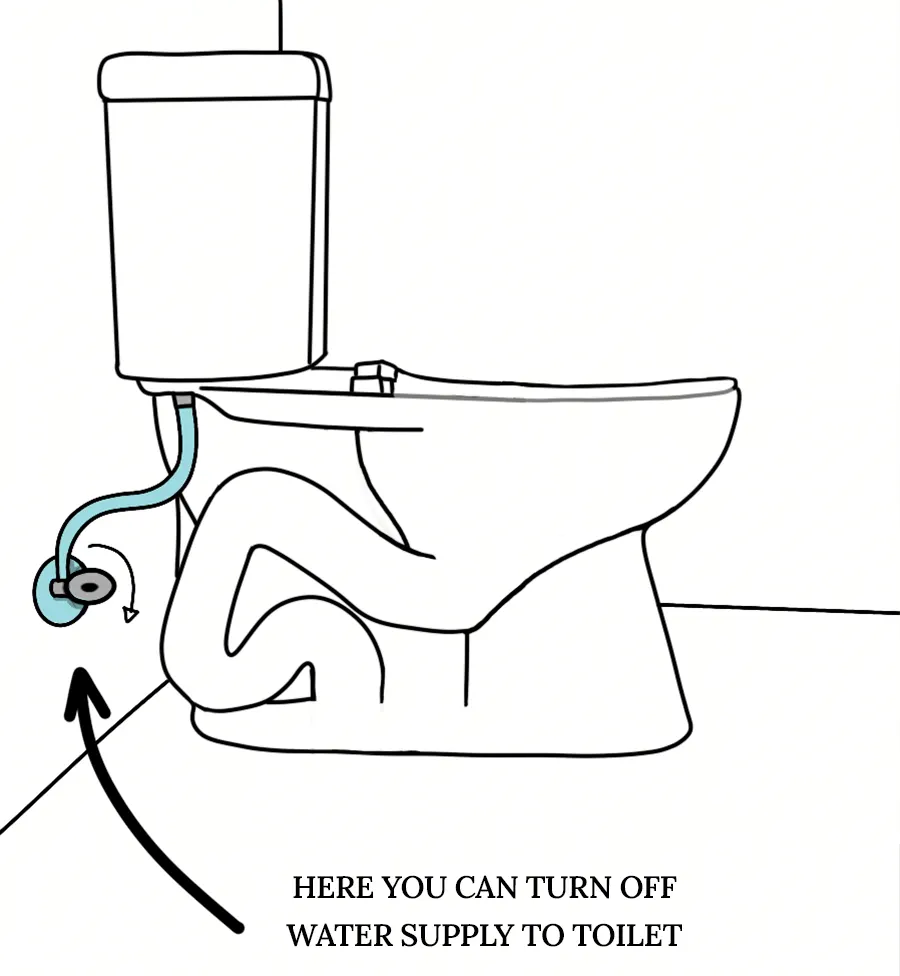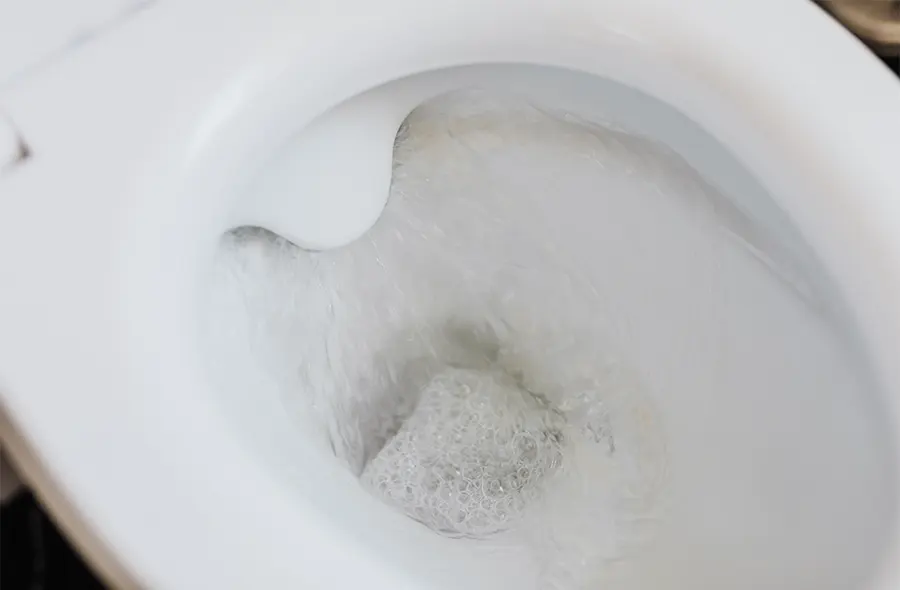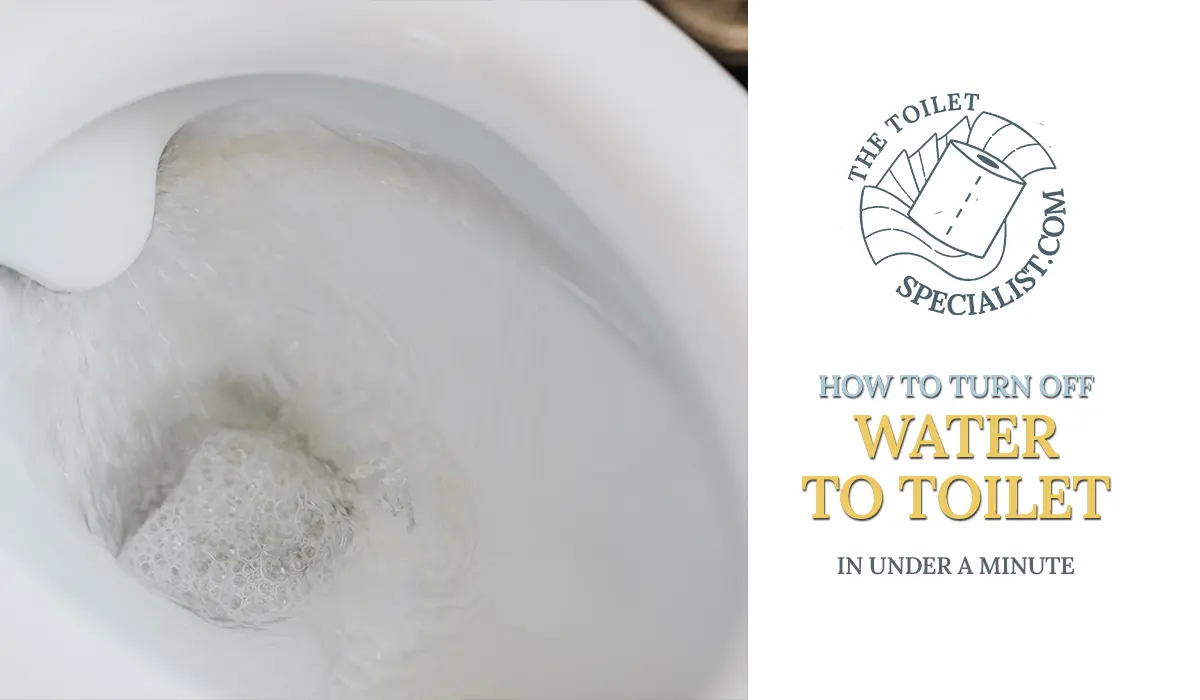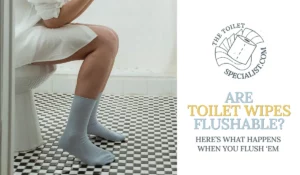Sooner or later, you need to turn off the water supply to your toilet. Perhaps for a deep clean. Luckily, it’s super easy to do.
To turn off the water supply to your toilet you simply need to turn the water valve, which is located behind your toilet, clockwise. This ensures there’s no more water going to your toilet. However, sometimes you might need to shut off your main water supply.
Keep reading to find out more details about how to safely turn off and on the water supply to your toilet.
How do I turn off the water supply to my toilet?
In order to turn off the water supply in your toilet, in most cases, you simply just need to close a valve.
To turn off the water supply to a toilet, follow these steps:
- Locate the water shut-off valve
- Look for a valve typically situated on the wall behind or beside the toilet. It may be a round knob or a lever.
- Turn the valve clockwise
- Using your hand or a pair of pliers, gently turn the valve in a clockwise direction. This motion will shut off the water supply to the toilet.
- Verify the water is off
- To make sure the water is completely off, flush the toilet. If no water refills the tank after flushing, you’ve successfully turned off the supply.
- Use a bucket or towels (optional)
- If you’re making repairs or need to empty the tank, you can use a bucket to scoop out any remaining water or use a large sponge to soak up water you can’t get out using a bucket.
By following these steps, you can safely and effectively turn off the water supply to your toilet for maintenance or repairs.

How to shut off your water valve when it’s not located behind your toilet
When your water valve isn’t conveniently situated behind or near the toilet, shutting off the water requires a few extra steps. Here’s how to do it:
- Locate the Main Water Shut-Off Valve
- The main water shut-off valve controls the water supply to your entire house. It’s typically located in the basement, crawl space, utility room, or near the water meter. In some homes, it may even be outside, close to the street. If you’re unsure, consult your home’s blueprints or ask a plumber for guidance.
- Turn Off the Main Valve:
- Using a wrench or pliers, turn the main valve clockwise (righty-tighty) to shut off the water supply. Be cautious when doing this, as the valve may be stiff, especially if it hasn’t been used for a long time. Turn it slowly to prevent any damage.
- Check the Toilet:
- After turning off the main valve, confirm that the water supply to the toilet has stopped by flushing it. If the tank doesn’t refill, the water is successfully turned off.
- Complete Your Task:
- With the water off, you can now proceed with your plumbing task, whether it’s repair or maintenance work on the toilet.
- Restore Water Flow:
- Once you’ve completed your task, turn the main valve counterclockwise (lefty-loosey) to restore the water flow throughout your home. Remember to do this slowly to avoid water hammering (sudden water pressure surges).
That’s it!
Is it bad to shut off the water to the toilet?
Shutting off the water supply to your toilet is not bad. In fact, it’s completely safe. The only logical downside to keeping the water supply off for an extended period is that no one can use that particular toilet. Make sure to not forget to turn the water supply back on.
Routine maintenance and occasional shut-offs are part of responsible homeownership. Inform your household if your toilet is left in a non-usable state for an extended time.
It’ll save you a lot of frustration ; )
You might also like: How to unclog your toilet fast
Which way do you turn off the water valve behind the toilet?
To turn off the toilet water valve, you should typically turn it clockwise. This motion, as you might know as “righty tighty,” will gradually close the valve and stop the water supply to the toilet. Remember that the valve orientation may vary slightly depending on the specific valve type, but in most cases, clockwise is the direction to shut it off.
Sometimes the valve is very hard to turn. You could use a wrench but be very careful! Another option is to use a bit of lubricant.
Here’s how to check if you turned the water supply to your toilet off correctly:
- Close the water valve
- Flush the toilet
- Check the tank
- If it stays empty after flushing, you’ve correctly shut off the water supply
If it refills with water after flushing the water supply isn’t cut off.
- If it stays empty after flushing, you’ve correctly shut off the water supply
Typically, closing the valve a quarter of the way will do. If there’s still water coming through, close the valve even more. But whatever you do, do not force it!
Why is my toilet still running after I turn off the water?
There might be several reasons for when there’s still water coming through after turning off the valve.
If your toilet continues to run after you’ve turned off the water supply, you either might have a malfunctioning flapper valve or a faulty fill valve. A flapper valve controls the flow of water from the tank to the bowl. If it’s worn or damaged, it may not seal properly, allowing water to continuously leak into the bowl.
A faulty fill valve may not shut off completely. Additionally, mineral deposits or debris in the valve or water line can hinder its ability to close fully. Be sure to check what is wrong so that you can fix the issues.
Fixing it will save you from a high water bill. Plus, water wastage is no joke!

How to turn off the water supply to the toilet with no valve
Don’t see a valve behind your toilet? No worries!
If your toilet doesn’t have a dedicated water shut-off valve, you can still turn off the water supply by shutting off the main water supply. Start by locating the main water shut-off valve for your entire home, usually found near the water meter or where the main water line enters your house. Turn the valve clockwise to shut off the water supply to the entire property.
Keep in mind that this action will affect all water fixtures in your home, not just the toilet. Think of your shower, other toilets, and sinks.
After completing your toilet-related task, remember to turn the main valve counterclockwise to restore water flow to the entire house. Oh, and don’t forget to inform your household!
You might also like: How much does a plumber cost? | Pricing insights
How to turn off the water supply to the toilet when the valve is stuck
When a toilet valve is stuck and won’t turn off, try gently tapping the valve with a wrench or pliers. This can sometimes free it up. Alternatively, you can try opening the valve after applying a bit of lubricant. Don’t force too much pressure as the valve may break. If all of this doesn’t work, you can always shut off the main water supply.
Here’s another tip: Do you know those rubber cloths, also known as gripper pads? They are usually used for opening jars. Try using these on your valve for extra grip!
Consult a plumber if you’re unsure what to do. They’ve been in situations like this before so they’ll know how to properly handle it.
How to turn off the water to the toilet push/pull
Don’t have one of those standard valves? Don’t worry. Here’s how to shut off your water:
To turn off the water supply when you have a push/pull valve, simply pull the handle. Confirm the water has actually stopped flowing by flushing the toilet. When, after flushing, the tank doesn’t fill up again you have successfully turned off the water. To open the water supply when you have a push/pull valve simply push the handle.
That’s literally it.
Here’s a demonstration:
To confirm the water is flowing again, flush the toilet. If the tank automatically fills up with water again, the water flowage is restored.
Disclaimer: TheToiletSpecialist.com is not responsible for any damage caused to your toilet and surroundings by (wrongly) interpreting information found on this site. Please seek custom advice from a professional to evaluate your current situation.
This article may contain affiliate links at no extra cost to you. AF links help support this blog so that it can exist and expand for years to come!





